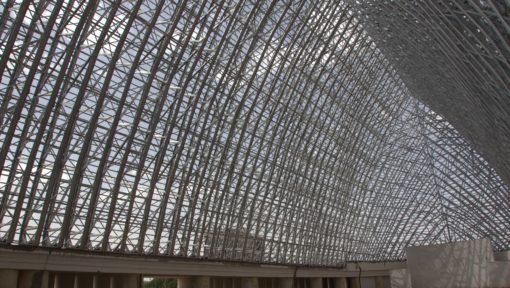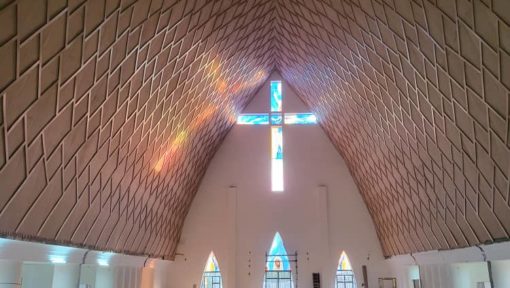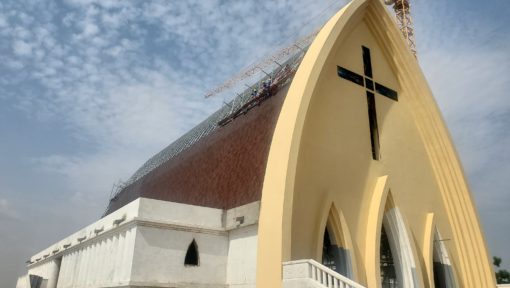Meticulous organisational skill in engineering let us complete the 40-year restoration story of a Chadian cathedral. Many said it couldn’t be done, so MiTek did it.
In Chad, an estimated 23% of the population identify as Catholic. Inaugurated in 1965, N’Djamena Cathedral stood for years as a striking testament to the Church’s often-overlooked influence. Then, during the turbulent 1980s, its distinctive arched roof was destroyed.
Restoration work in 1986 brought the Cathedral back to a fit state for worship, but these works were modest. Funds for this partial restoration weren’t enough to bring back the roof. Instead, designers opted for a flat one, made of ordinary double-pitch steel. Needless to say, it looked jarring set against the structure’s gabled end.
The intention was always to one day revisit the project, and several attempts were made over the years. Unfortunately, ongoing tensions made the dream hard to realise. Then, in 2019, MiTek were called in at short notice to revive the restoration.
Another firm’s designs had proven impossible to implement, we needed to come up with something better.
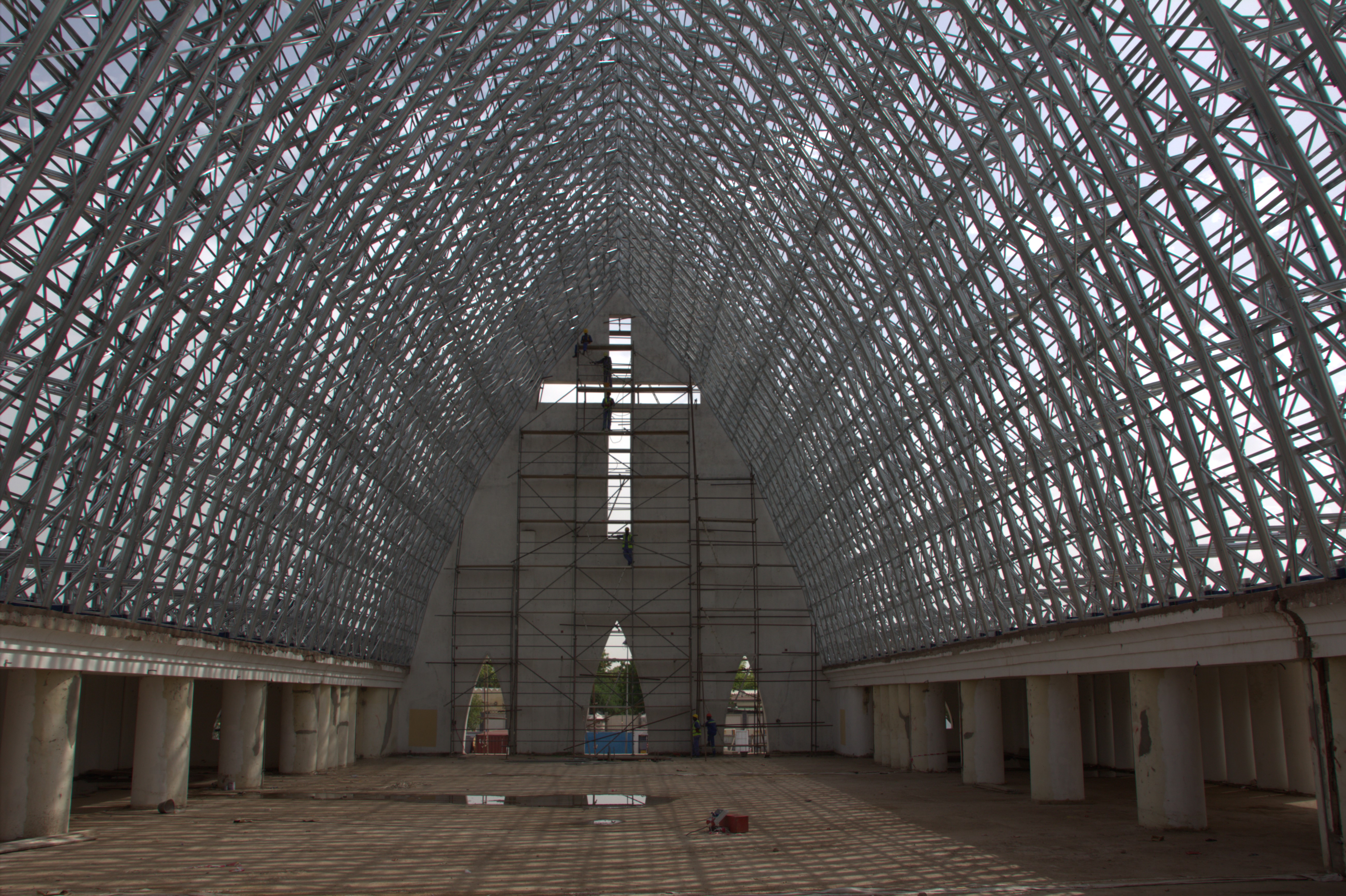
Ultra-Span bears the weight of expectations
A number of factors made this a tricky engineering proposition. The site had enormous cultural and religious significance. Even if we had time, we couldn’t simply tear it all down and start from scratch. The damaged wall structure had been replastered and refurbished, even the parabolic gable and bell towers had been faithfully recreated. It all had to stay, with a new roof on top.
Many voices in the industry were of the opinion that this project couldn’t be done. Our colleagues, Uwe Schluter, Jaco Van Wyk, Mark Malan and Mike Newham disagreed. The old designer’s idea had failed because the building’s foundations couldn’t carry the proposed heavy gauge.
Using Ultra-Span, we could split the weight of our roof across 850 centres, with trusses clustered quite close together. That minimised the point load effect on the foundations. Underneath, an advanced polyester membrane was hung to cover the works. This membrane serves as a screen for projecting lights and patterns during services.
Even with our revised design, the roof was still an impressive construction. It represented the single biggest use of steel on any MiTek South Africa project; 96 tonnes of light gauge. Logistics challenges meant the steel couldn’t come through nearby Cameroon. It had to travel through Spain, and via Algeria by road to reach Chad.
Confident project management at every step, informed by a long track record of success, got this project over the line. Better, it all came in significantly below the previous contractor’s budget.
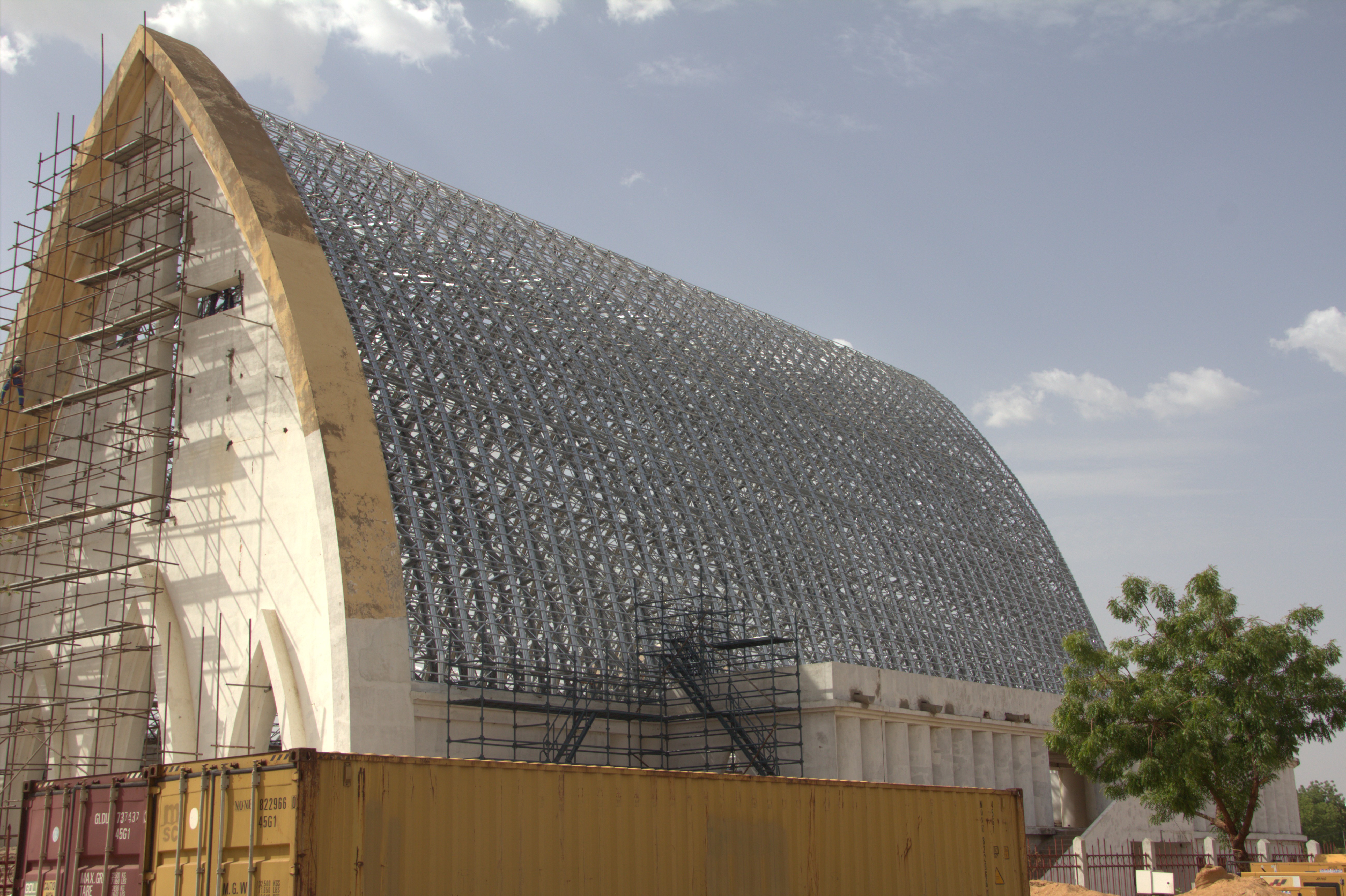
Outcome: An architectural miracle in turbulent times
Notre-Dame de la Paix de N’Djamena Cathedral was formally reopened in April 2023. Religious and secular leaders, including the Transitional President and representatives of many faiths, were there to witness its rededication.
N’Djamena’s Catholic community finally have their true church back, as it was originally envisioned. But even more than that, the project demonstrates that rebuilding and healing are possible when we work together.
In Uwe’s words, “Those of us on the project, we have enormous passion for what we do. This was our way of making a statement about what MiTek can do, the kind of talent we have on board. We think one step further than normal.
I don’t think this could have been achieved using many other teams. It’s triumph of organisational skill at the engineering level. And when you see the impact on the community, we really couldn’t have done it all for a better cause. This was the right opportunity at the right time.”
